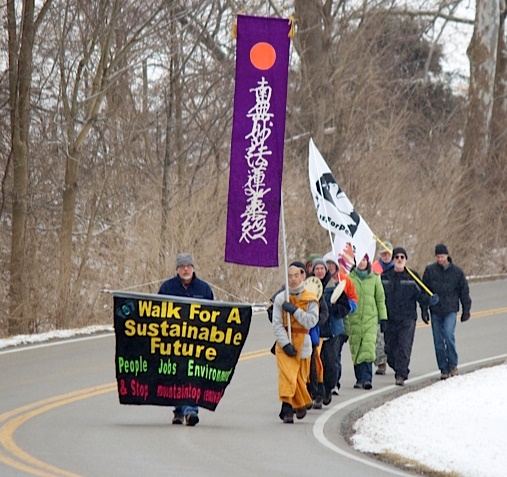- About Archives
- About SAA
- Careers
- Education
- Publications
- Advocacy
- Membership
How do you document a community that is in motion? What role does “walking” play in social justice and personal journey? What are the boundaries of traditional oral history methodology? These are some of the questions I asked myself recently when embarking on an oral history project to document the work of Footprints for Peace, a non-profit organization dedicated to creating change through peaceful action.

During February, Footprints for Peace held their annual “Walk for a Sustainable Future,” to raise support for the improvement of Eastern Kentucky’s environment, health, and economy as well as to heighten awareness of the impact of mountaintop removal coal mining practices on Appalachian communities. The walk spanned 14 days and 150 miles from the coalfields region in Eastern Kentucky to the state capitol in Frankfort. Participants ranged from residents of the Ohio Valley region and Appalachia to Japanese Buddhist monks, Veterans for Peace, and American Indians.
As a participant observer, I cooked, ate, slept, conversed, and walked with the group. The most opportune, and authentic, time to record was when walking. As such I used a handheld Olympus LS-12, Marantz PMD 660, and a variety of microphone configurations to record side-by-side walking oral histories. While in many ways this approach was less than ideal (challenges included narrow road shoulders, hostile locals, traffic noise, inclement weather, juggling cords and equipment), it was uniquely advantageous to talk and walk because it allowed for capturing both the thoughts and action that are at the heart of Footprints for Peace.
It was an honor to walk with and to document this diverse and inspiring community of walkers. What began as an adventurous take on the academic research trip became an unwitting exploration of trust, privilege, community, and peace. These oral histories will become part of the collection at the University of Louisville Oral History Center, were we welcome comments or questions about the project.
Photograph by Larry Bringing Good
<< Previous: The Dole Institute Oral History Project | Dialogue: Winter 2014 |